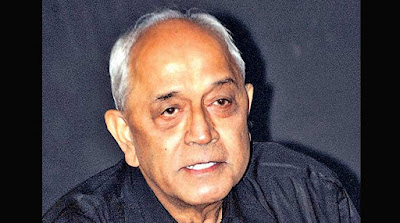The elevation of Yogi Adityanath as the Chief
Minister of Uttar Pradesh is an instance of this challenge.
The concept of Hindu Rashtra is
not only outdated but also impossible. Illustration by CR Sasikumar
Written
by Arjun Dangle | Published:June
11, 2017 3:09 am
Twenty-five
years ago, I had edited an anthology of Dalit literature, Poisoned Bread:
Translations from Modern Marathi Dalit Literature. In the introduction, I had
stated: “In the coming age, India will see religion and politics go
hand-in-hand. When that happens, the literati, intellectuals, and thinkers who
believe in secular and democratic values will have to be ready to face the
challenges that will arise.”
The
elevation of Yogi Adityanath as the Chief Minister of Uttar Pradesh is an
instance of this challenge. This mixing of religion and politics results in
feudalism. In India, it may not lead to race-based fascism but it can result in
authoritarianism centred on religion. The first laboratory for the creation of
such a Hindu Nation (Hindu Rashtra) was instituted in Gujarat under the
leadership of Narendra Modi; the Sangh Parivar has now
initiated the second such laboratory in Uttar Pradesh.
The
concept of Hindu Rashtra is not only outdated but also impossible. The last
Hindu kingdom, Nepal, has itself done away with the anxieties of the Hindu
Rashtra and is now standing strong on the pillars of secularism and democracy.
Supporters
of the idea fail to define what a Hindu Rashtra is. Will it have a different
Constitution? Will it have a different national flag? Will the national anthem
be different?
Well, if
the Hindu religion and its followers are not honoured in a country, are unable
to celebrate their festivals, or have had their temples demolished, then the
idea of a Hindu Rashtra makes logical sense. However, the fact is in
post-Independence India, all the elected governments, at the Centre and in the
states, have been dominated by Hindus, irrespective of the party in office.
As the
notion of a Hindu Rashtra cannot take a tangible form, the Sangh Parivar has
been consistently running a hidden agenda, which has produced a strait-laced
and dogmatic ideology. As a result, a Hindu Rashtra is being sought to be
established by targeting Muslims, Dalits, Christians and other minorities and
by demolishing the principle of one man, one vote, one value bestowed by the Constitution.
The violent religious frenzy of the “gau rakshaks” is a realisation of the
Hindu Rashtra agenda.
Hindu
Rashtra and Hindutva, however, are not the same. Hindutva is related to Indian
culture, whereas Hindu Rashtra is rooted in caste hegemony. There is no reason
to oppose Hindutva because the Constitution provides each one the freedom to
practice the religion of his/her choice and follow the lifestyle it entails.
The majority of Hindus are not casteist or fanatical. But, knowingly or
unknowingly, leftists, progressives, seculars, and Ambedkarites have committed
the mistake of targeting the entire Hindu community, while intensely opposing
Hindutva. The Sangh Parivar has found an opportunity here to polarise the Hindu
community.
My
observation may seem similar to the “soft Hindutva” of the Congress. There is a
basic difference, however, in the organisational structure of the Congress and
the Sangh Parivar. Every party worker in the Sangh Parivar, from the top to
bottom, is orthodox and dogmatic. In the Congress and other secular
organisations, top officials may be secular and the workers are either
followers of Hinduism or Islam.
My
concerns are about values. It is the responsibility of the government to
protect and preserve values — one man, one value, tolerance, liberty, equality,
fraternity, and national integration — upheld by the Constitution. But when one
listens to historians, scientists, politicians, judges and saints close to the
Sangh Parivar, one is transported to the 18th century. The country is going
through a psychological and ideological dialectical phase.
Jawaharlal
Nehru, Indira Gandhi, Atal Bihari Vajpayee were not just elected prime
ministers of India, they were accepted as leaders by Indian society. Why is
Narendra Modi, who won a convincing mandate, not regarded as a leader by all
Indians? The Sangh Parivar needs to introspect. Why does the Sangh leadership
remain silent and provide moral support to the party workers, who make
incongruous comments that provoke separatism? It scares me when tolerance,
civility, and culture in the socio-political system seem to disappear.
It scares
me that the BJP and Sangh Parivar never use the names of their idols, Hedgewar
and Guru Golwalkar, in election campaigns.
Instead,
they have appropriated those who have worked hard to preserve the values of
liberty, unity, fraternity and national integration — like Shivaji Maharaj, Mahatma
Gandhi, Babasaheb Ambedkar, and Sardar Patel.
The
battle for values is inevitable regardless of the party in power. It is necessary
to fight the tendency that endangers liberty, equality, fraternity, tolerance
and national integration. It is the duty of writers, artists, intellectuals,
and journalists to uproot such a tendency. As a writer-activist, who believes
in democracy and who wishes to see the socialisation of democracy, I reiterate
what Babasaheb Ambedkar said on November 25, 1949, while presenting the
Constitution: “We are going to enter a life of contradictions. In politics, we
will have equality and in social and economic life, we will have inequality. We
must remove this contradiction at the earliest possible moment. Else, those who
suffer from inequality will blow up the structure of political democracy.”
Dangle,
one of the founder members of the Dalit Panthers, is an acclaimed writer. The
article was translated from Marathi to English by Rushikesh Aravkar
Source: indianexpress




